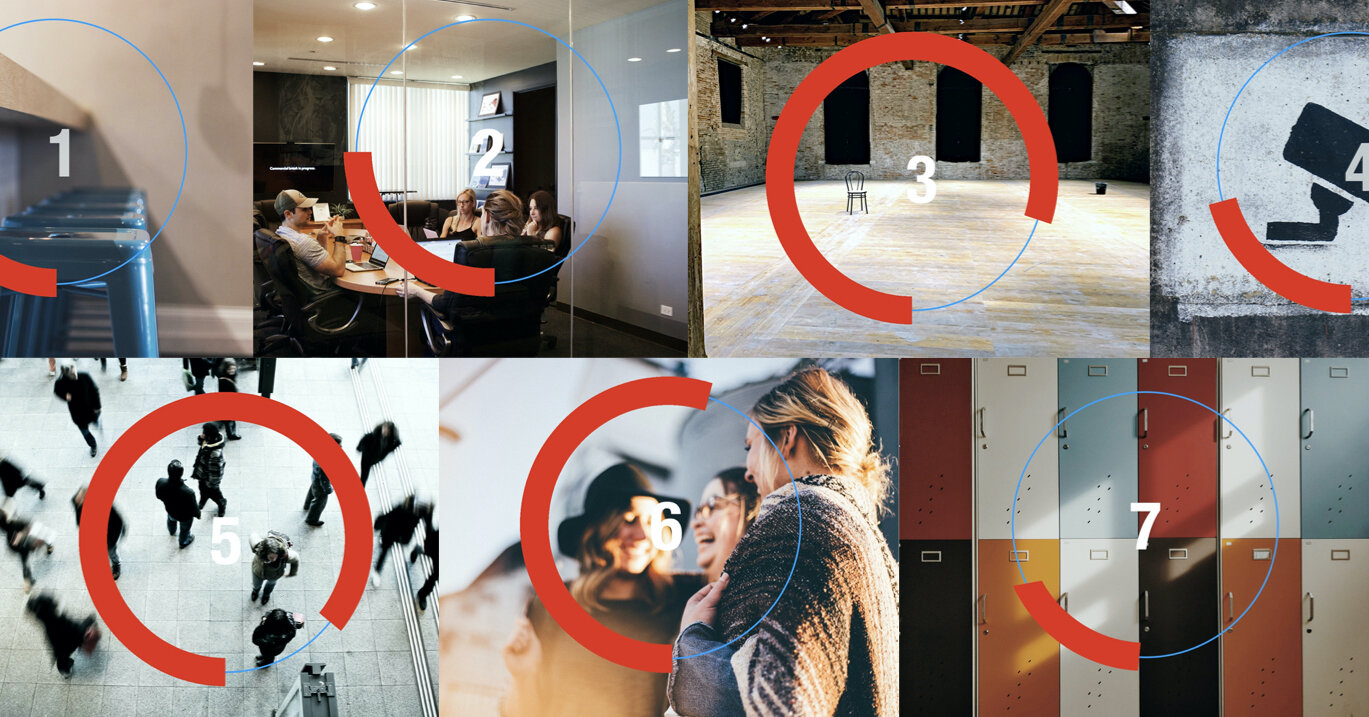In many ways, the COVID-19 pandemic has accelerated workplace transformations that began many years ago. Our pre-pandemic challenges involved the development of reliable methods for users, even those with little experience, to successfully define and validate productive office environments.
Interest in the platform originally came from design professionals, where questions like “How much time remains in the client's lease” often framed their challenge. If it was too little, no assurances could be made that the interests of stakeholders would align with the business interests that would eventually occupy the new space. And no matter what the circumstances, adjustments would not likely happen until years later.
But this is changing.
“The flex space marketplace succeeds by satisfying diverse and explicit expectations.”
We’re seeing a newer, more diverse, and growing audience weighing the advantages of flex space as a viable alternative to custom office development. This audience includes not only freelancers and startups, but '3rd Space' work-from-home types, as well as the small, medium-sized, and enterprise businesses that employ them.
Space providers in the flex space marketplace have a vested interest in supplying the broadest range of workplace options possible on much more amenable terms. But this does not necessarily mean workplace strategy decision making is getting any easier.
Complexity is increasing as working environments become more widely distributed between corporate hubs, flex spaces, and home offices. And many of the co-working spaces of the past were not originally intended to serve the new business interests now considering their use.
“The scope of the flex space marketplace is broad enough to readily accommodate business transformations.”
Workplace strategists, particularly in the enterprise, are faced with difficult new challenges.
What standards apply to the overall definition of a physical workplace for a widely distributed workforce and how are these standards articulated?
How does each location support these standards?
How do standards support goals for employee performance and engagement?
Which physical inventories can be most effectively leveraged for corporate hubs?
How can excess inventories be profitably repurposed in the flex space marketplace?
“Accommodating mobility is a cornerstone of the flex space marketplace.”
Business cultures can have conflicting needs. As a result, it’s unlikely that any one type of workplace will satisfy everyone. Managing working environments in the flex space marketplace requires creative alternatives.
There are 3 Important aspects of this challenge.
TRANSPARENCY — The flex space marketplace succeeds by satisfying diverse and explicit expectations.
OPPORTUNITY — The scope of the flex space marketplace is broad enough to readily accommodate business transformations.
MOBILITY — Accommodating mobility is a cornerstone of the flex space marketplace; transparency and opportunity make it possible.
“Mobility is the invisible hand of the workplace.”
Managing increased complexity requires better tools. Fortunately, data driven platforms that help define effective office environments can also easily identify ideal opportunities for mobility in the flex space marketplace.
To paraphrase Sun Tzu in The Art of War, "If you know yourself and know others, you will not be imperiled in a hundred battles."
Mobility is the invisible hand of the workplace.
Get in touch if you’ve got questions or would like to learn more. Please leave your comments below.
A version of this post originally appeared in LinkedIn Pulse.
-
September 2021
- Sep 22, 2021 The Invisible Hand of the Workplace Sep 22, 2021
-
October 2020
- Oct 6, 2020 Avoid Culture Shock: Measure Twice Cut Once Oct 6, 2020
-
March 2020
- Mar 2, 2020 Site Unseen Mar 2, 2020
-
January 2020
- Jan 13, 2020 Scenario Planning Provides Responsive Outcomes Beyond Ideology Jan 13, 2020
-
October 2019
- Oct 29, 2019 Business Culture is the new Corporate Standards Oct 29, 2019
-
May 2017
- May 10, 2017 The Office Programming Trap May 10, 2017
-
April 2017
- Apr 25, 2017 Programming Matters Apr 25, 2017
-
March 2017
- Mar 27, 2017 Big Cultures Small Spaces Mar 27, 2017
-
September 2016
- Sep 29, 2016 Challenged Beliefs Sep 29, 2016
-
July 2016
- Jul 6, 2016 Probable Pain Jul 6, 2016
-
June 2016
- Jun 14, 2016 An Unfortunate History Jun 14, 2016
- Jun 1, 2016 Lucky or Wrong Jun 1, 2016
-
May 2016
- May 20, 2016 Inside Out May 20, 2016







